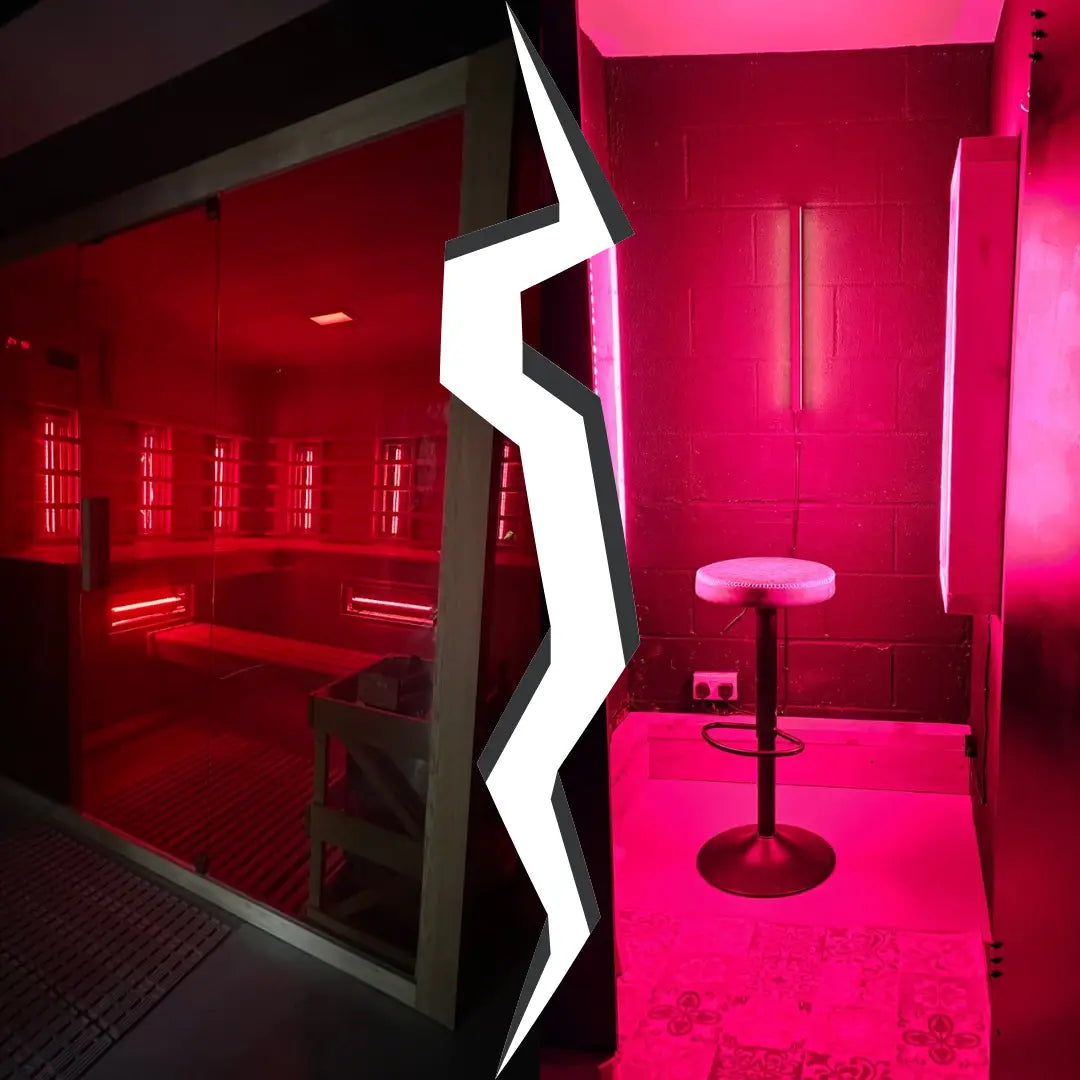
Near vs. Far Infrared Light: Understanding the Differences and Benefits
Share
Near vs. Far Infrared Light: Understanding the Differences and Benefits
Infrared light, though invisible to the human eye, is a type of electromagnetic radiation that has become increasingly popular for its promising role in modern light therapy. Used in a variety of wellness and therapeutic applications, infrared light is generally categorized into two primary types: near infrared (NIR) and far infrared (FIR). While both provide health and wellness benefits, understanding their unique characteristics can help you tailor your approach, whether your goal is skin rejuvenation or deep muscle relaxation.
What is Near Infrared Light (NIR)?
Near infrared light falls within the wavelength range of 780 to 1400 nanometers, positioning it just beyond the spectrum of visible light. Its shorter wavelength allows NIR light to penetrate the skin more deeply than visible light can, reaching the underlying subcutaneous tissues. This deeper absorption is why NIR is often integrated into light therapy devices focused on supporting tissue repair and regeneration. Its gentle, non-heating quality makes it ideal for surface-level treatments, especially when targeting concerns like fine lines, wounds, or minor pain relief without discomfort.
What is Far Infrared Light (FIR)?
Far infrared light occupies a longer wavelength range, from approximately 3 to 1000 micrometers. Because of these longer wavelengths, FIR has a unique ability to produce heat without relying on direct contact with the skin. This thermal property allows FIR light to penetrate more profoundly, reaching muscles, joints, and other soft tissue areas. The relaxing heat produced by FIR technology is a pivotal reason it's widely used in fir light therapy applications such as saunas and muscle recovery treatments, supporting deep tissue relaxation and overall well-being.
Key Differences Between NIR and FIR
Benefits of Near Infrared Light (NIR)
NIR light therapy harnesses the power of photobiomodulation to stimulate natural biological processes in the body, generating a range of benefits:
Benefits of Far Infrared Light (FIR)
FIR light therapy leverages radiant warmth to encourage deeper physiological changes in the body’s soft tissues and organs:
Considerations for Choosing Between NIR and FIR
Your choice between NIR and FIR light therapy should align with your goals and comfort preferences:
Conclusion
Both near infrared and far infrared light therapy deliver distinct advantages, empowering users to select personalized treatment solutions based on their specific health objectives. By recognizing the unique properties and benefits of each, you can make informed decisions about light therapy that align with your lifestyle and needs. As always, consulting a knowledgeable healthcare provider before incorporating new therapies—even those as safe and accessible as NIR or FIR treatments—is highly recommended to ensure the best outcomes.
If you have questions or concerns about choosing between NIR and FIR light therapy or their suitability for particular conditions like skin rejuvenation or pain management, consult a qualified medical professional for tailored guidance.